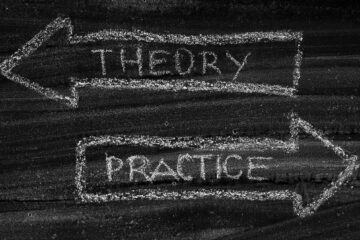Cross-posted from Education Week
I recently finished rereading The Race Between Education and Technology, by Claudia Goldin and Lawrence Katz, two Harvard economists. In it, Goldin and Katz describe how American investments in the skills and knowledge of our people contributed, stage-by-stage, to the ability of this country to dominate the global economy. The story begins in the nineteenth century with our early investment in universal primary education and continues with the high school movement at the turn of the century. Just as our investment in elementary schools enabled us to lead the world in the level of formal education obtained by our workforce in the mid-nineteenth century, the high school movement enabled us to lead the world in the proportion of our workforce with the equivalent of a high school diploma. And, another half century later, we did it again, this time for college-age students, after the Second World War.
Goldin and Katz point out that, by leading the world in increasing the supply of educated workers at each of these stages, we should have been producing an oversupply of educated workers, quickly reducing the economic returns to investment in more skills and knowledge. But that did not happen because technology was advancing so swiftly that that the demand for more highly educated workers was increasing just as fast or even faster than the supply. It was this symbiotic relationship between advancing technology and increased supply of every-better educated workers that enabled the U.S. to build the world’s most successful economy.
Just as importantly, the authors point out that we were educating the whole spectrum of students, not just our elites, so people at every level of the economy were more productive and could participate in the rewards offered by the use of the new technologies. Put another way, because we were providing a far more democratic form of education for the whole population, our economy and our society could produce prosperity not just for the few, but prosperity that could be broadly shared by all classes of the society.
The long story of improved access to education came to a crashing halt in the 1970s and 80s. Our schools and, later, our colleges, continued to cost more and more, but high school graduation rates suddenly stopped growing and the proportion of our population with the equivalent of a four-year college degree also topped out. In time, productivity growth slowed down and income inequality soared. According to Goldin and Katz, these facts are closely related.
If we were continuing to pour money into our schools and colleges at ever-increasing rates, why did increasing access to education come to a sudden and sustained halt? One might argue that there is a natural limit to the proportion of students who can do what it takes to graduate from high school and the same applies to the proportion that can do the work required to get a college degree. But that does not wash. Other countries, which long had lower graduation rates from school and college have been surpassing us for years, some by wide margins. And, by all available measures, at least at the school level, they have been providing a higher quality of education, too. So what is going on?
Goldin and Katz have part of the answer right. Some of our early advantages—our decentralized governance system, our system of local finance, our effort in the 1930s to get education out of politics—had become disadvantages.
But I think something else important happened in the 70s and 80s. Prior to that, Americans trusted their professional educators. When Congress first passed ESEA, their assumption was that disadvantaged schools needed more money and better research to improve the outcomes for their students and that educators would know how to use these resources. In those days, Governors developed education policy by working with their respective associations of educators to find out what they wanted and doing their best to give it to them.
And then we learned to distrust our teachers and our school administrators. Candidates for governors began to run on education reform platforms that were not preapproved by their education associations. Professional education reformers began to talk about the need for “disruptive change,” change that would come from the outside of the education system to disrupt what they say was the comfortable, all-too-cozy arrangements within the system. And then came the talk of setting up schools to compete with regular schools and of accountability systems that could get teachers fired if they did not perform.
There was good reason to question school performance, but the turn to distrust and anger has been disastrous. When we started to make education policy on the basis of our increasing frustration with the education establishment in the 1970s and early 80s, we set the stage for the complete halt in the improvement in access to a quality education on which Goldin and Katz rightly focused in their book. Because the advances in education were stopped in their tracks, we got a steadily widening gap in incomes that will destroy this country if we don’t fix it. Not one of the countries that has surpassed the U.S. in education performance got there by getting mad at its teachers and imposing tough accountability systems on them or deliberately disrupting their education systems. Every one of them did it by providing strong support for young children and their families, creating more equitable systems of school finance, improving the quality of the pool from which they had been recruiting their teachers, increasing the rigor of their preparation, paying them more and creating a professional environment for their work, while greatly improving the quality of their instructional systems at the same time.
We have gone down one path; the top-performing countries have gone down another. The ref has called the game and we have lost, but we seem not to have noticed that yet. Time is running out on us to start learning these lessons. The rising inequality of incomes in the U.S. will in due course lead to very different, and very corrosive, politics. History can be very unforgiving.





